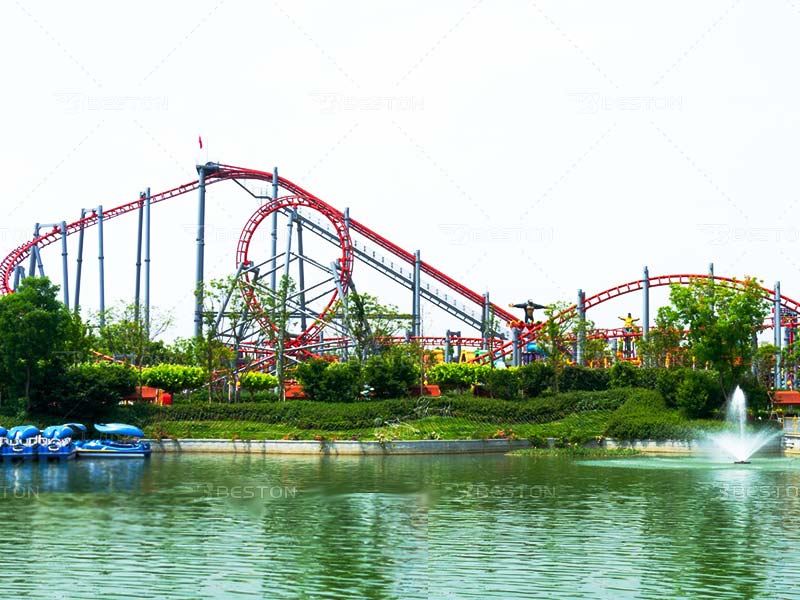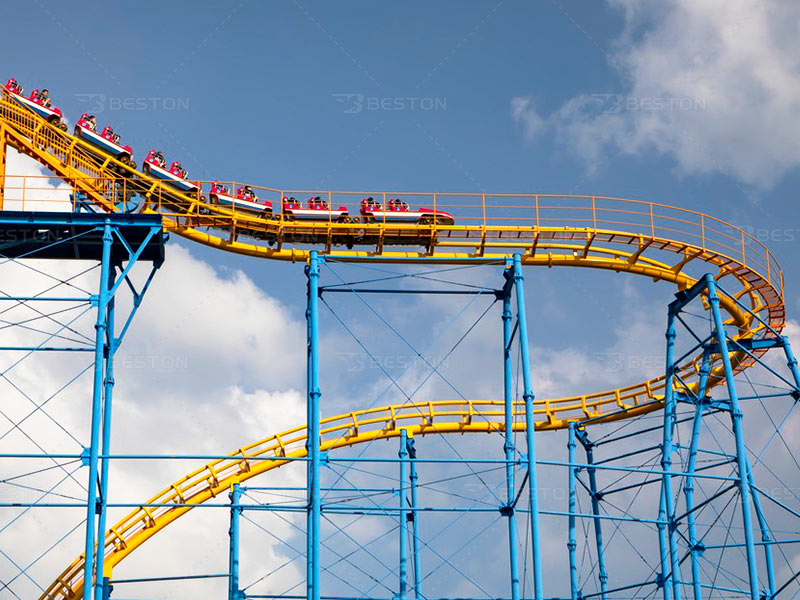Choosing amusement park roller coasters for sale is a significant investment that requires careful consideration of various factors to ensure you select the right ride for your park and visitors. Here’s a comprehensive guide to help you make informed decisions when choosing roller coasters for your amusement park:

1. Define Your Requirements
- Capacity and Throughput: Determine the desired capacity of the amusement park roller coasters for sale in terms of riders per hour to accommodate your expected foot traffic.
- Size and Space: Assess the available space in your park to determine the maximum footprint and height restrictions for the roller coaster.
- Target Audience: Consider the demographics and preferences of your target audience to choose a roller coaster that appeals to their interests and thrill levels.
2. Research Roller Coaster Manufacturers
- Reputation and Experience: Research reputable roller coaster manufacturers with a proven track record of delivering high-quality rides and excellent customer service.
- Safety Record: Prioritize manufacturers with a strong commitment to safety and compliance with industry standards and regulations.
- Innovation and Technology: Look for manufacturers that incorporate innovative features, cutting-edge technology, and unique ride experiences in their roller coasters.

buy amusement park roller coaster
3. Evaluate Roller Coaster Designs
- Type of Roller Coaster: Consider different types of roller coasters, such as steel coasters, wooden coasters, inverted coasters, or launched coasters, based on your park’s theme and target audience.
- Features and Elements: Assess the ride elements, such as loops, inversions, drops, and special effects, to ensure they align with your park’s thrill level and guest experience goals.
- Theme Integration: Choose a roller coaster design that complements your park’s theme and enhances the overall atmosphere and storytelling. Such as mini backyard roller coaster for sale.
4. Assess Ride Experience and Thrill Level
- Intensity Level: Determine the desired thrill level of the roller coaster based on your target audience’s preferences and comfort levels.
- Ride Duration: Consider the ride duration and pacing to provide a balanced and enjoyable experience for riders without being too short or too long.
- Special Effects: Evaluate additional features such as onboard audio, synchronized lighting, or virtual reality elements to enhance the ride experience and immersiveness.
5. Consider Maintenance and Operational Requirements
- Maintenance Needs: Assess the maintenance requirements and operational costs associated with the roller coaster, including inspections, repairs, and spare parts availability.
- Operational Efficiency: Choose a roller coaster with efficient loading and unloading procedures, minimal downtime, and streamlined operations to maximize throughput and guest satisfaction.
- Training and Support: Ensure that your staff receives comprehensive training and ongoing support from the manufacturer to operate and maintain the roller coaster safely and effectively. Such as wild mouse roller coaster for sale.
6. Review Financial Considerations
- Budget: Determine your budget for purchasing and installing the roller coaster, including upfront costs, delivery fees, and any additional expenses such as theming or landscaping.
- Return on Investment: Evaluate the potential return on investment based on factors such as ticket sales, increased foot traffic, and guest satisfaction to justify the cost of the roller coaster.
- Financing Options: Explore financing options, leasing arrangements, or partnerships with manufacturers to make the purchase more affordable and manageable within your budgetary constraints.
7. Plan for Installation and Theming
- Installation Requirements: Coordinate with the manufacturer to plan the installation process, including site preparation, infrastructure upgrades, and safety inspections, to ensure a smooth and timely installation.
- Theming and Integration: Consider theming and landscaping elements to integrate the roller coaster seamlessly into your park’s environment and enhance the overall guest experience and immersion.
By following these steps and considerations, you can choose amusement park roller coasters kiddie amusement rides for sale that align with your park’s vision, theme, and guest experience goals, providing thrilling and unforgettable rides for visitors of all ages.